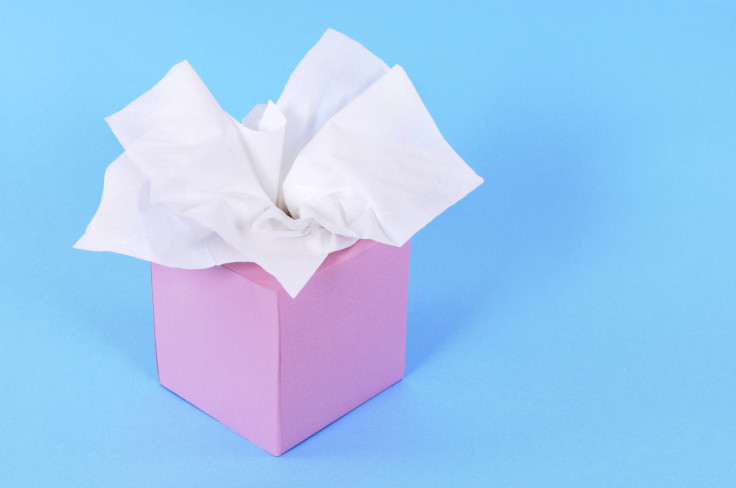Johnson & Johnson Launches App That Will Tell You When Your Neighbors Are Sick

It seems that even for the snoopy hypochondriac out there, there's an app especially made for you.
As reported by Mashable, McNeil Consumer Healthcare, a division of Johnson & Johnson, has recently released an app that can tell you who in your surrounding area might be stricken with the cold, flu, or allergies. Called HEALTHYDAY, it’s meant to allow users the opportunity to scout ahead for potential trouble spots of illness and prepare accordingly.
According to a press statement announcing its launch, HEALTHYDAY utilizes the same medical data available to doctors and hospitals and, with the help of a patent-pending algorithm, combines that with crowd-sourced tidbits from Google and social media to create a map of reported cold, flu, and allergy cases around the user (you can submit your own symptoms to the app as well). Like a decidedly less sexy version of Tinder, it then sends out "illness alerts" when these available diseases are in your area, alongside basic health tips like washing your hands. The tips are subtly laced with advertisements for the plethora of products the company sells — like ZYRTEC@, the number one allergist recommended brand (ahem).
Still, it’s hard to argue against reminding people to keep themselves aware of healthy habits, and the app is many ways the culmination of previous efforts by researchers to use the internet as a means of disease surveillance. The authors of a 2011 PLOS-One study found that they could use Twitter tweets and trends as an accurate stand-in for monitoring the prevalence of a 2009 outbreak of H1N1 flu. "Our results demonstrate that Twitter traffic can be used not only descriptively, i.e., to track users' interest and concerns related to H1N1 influenza, but also to estimate disease activity in real time, i.e., 1–2 weeks faster than current practice allows," they concluded.
And for those interested in a broader picture, you can turn to Crowdbreaks.com, a project developed by the Salathé research group at the Center for Infectious Disease Dynamics (CIDD) at Penn State University which also crowd-sources information from Twitter alongside collecting trending stories about outbreaks and alerts by state health departments and the media. (In my local area of Bay Ridge, Brooklyn, it appears that AIDS and chlamydia are the only diseases worth mentioning on Twitter recently).
Crowdbreaks is still in its beta stage, eagerly awaiting for more humans to refine its disease-spotting algorithms by answering questions about sample tweets that could indicate the presence of one disease or another. (Currently on the site is a question about whether or not a complaint about a hurt back could signal influenza). As such, for the time being, the site warns not to solely rely on its information for your health concerns — advice that may hold just as well for any HEALTHYDAY fans.
Still, in a climate where we often bemoan the excesses of social media, it’s nice to know that some are focused on channeling the vast amounts of information we spew out there into something productive.
"Despite living in a digital age, no one else has yet addressed these common health issues in a mobile format," said Sumeet Narula, Digital Brand Manager of McNeil Consumer Healthcare, in an accompanying statement. "Through the HEALTHYDAY app, we're serving as a trusted sponsor of aggregated information from respected sources so that we can help consumers and enable them to feel confident they're making better decisions about their health."
Now if only it was available on Android, too.



























